Tag Archive: Artificial
February 23, 2017 / by Marco / Advanced, Artificial, Bundle, Business', deals, Deep, design, entrepreneur, guide, intelligence, Learning, website
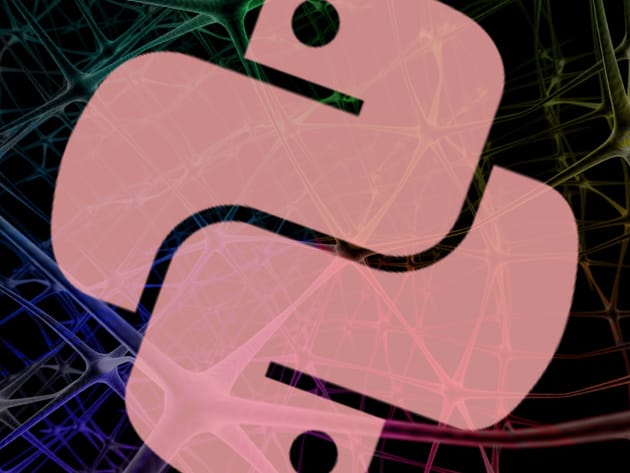
The Advanced Guide to Deep Learning and Artificial Intelligence Bundle for $42
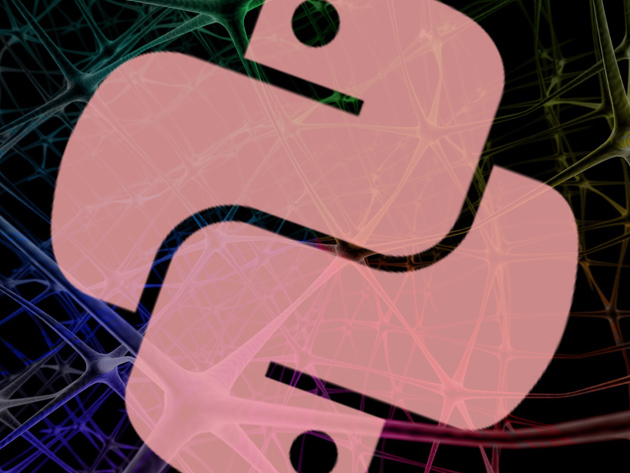
KEY FEATURES
In this course, intended to expand upon your knowledge of neural networks and deep learning, you’ll harness these concepts for computer vision using convolutional neural networks. Going in-depth on the concept of convolution, you’ll discover its wide range of applications, from generating image effects to modeling artificial organs.
- Access 25 lectures & 3 hours of content 24/7
- Explore the StreetView House Number (SVHN) dataset using convolutional neural networks (CNNs)
- Build convolutional filters that can be applied to audio or imaging
- Extend deep neural networks w/ just a few functions
- Test CNNs written in both Theano & TensorFlow
Note: we strongly recommend taking The Deep Learning & Artificial Intelligence Introductory Bundle before this course.
PRODUCT SPECS
Details & Requirements
- Length of time users can access this course: lifetime
- Access options: web streaming, mobile streaming
- Certification of completion not included
- Redemption deadline: redeem your code within 30 days of purchase
- Experience level required: all levels, but you must have some knowledge of calculus, linear algebra, probability, Python, Numpy, and be able to write a feedforward neural network in Theano and TensorFlow.
- All code for this course is available for download here, in the directory cnn_class
Compatibility
- Internet required
THE EXPERT
The Lazy Programmer is a data scientist, big data engineer, and full stack software engineer. For his master’s thesis he worked on brain-computer interfaces using machine learning. These assist non-verbal and non-mobile persons to communicate with their family and caregivers.
He has worked in online advertising and digital media as both a data scientist and big data engineer, and built various high-throughput web services around said data. He has created new big data pipelines using Hadoop/Pig/MapReduce, and created machine learning models to predict click-through rate, news feed recommender systems using linear regression, Bayesian Bandits, and collaborative filtering and validated the results using A/B testing.
He has taught undergraduate and graduate students in data science, statistics, machine learning, algorithms, calculus, computer graphics, and physics for students attending universities such as Columbia University, NYU, Humber College, and The New School.
Multiple businesses have benefitted from his web programming expertise. He does all the backend (server), frontend (HTML/JS/CSS), and operations/deployment work. Some of the technologies he has used are: Python, Ruby/Rails, PHP, Bootstrap, jQuery (Javascript), Backbone, and Angular. For storage/databases he has used MySQL, Postgres, Redis, MongoDB, and more.
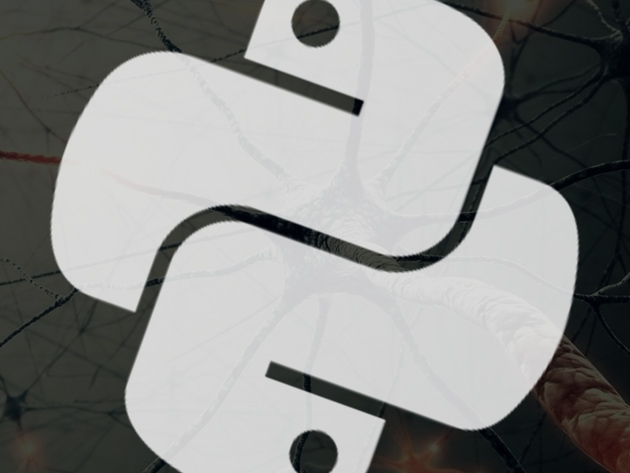
KEY FEATURES
In this course, you’ll dig deep into deep learning, discussing principal components analysis and a popular nonlinear dimensionality reduction technique known as t-distributed stochastic neighbor embedding (t-SNE). From there you’ll learn about a special type of unsupervised neural network called the autoencoder, understanding how to link many together to get a better performance out of deep neural networks.
- Access 30 lectures & 3 hours of content 24/7
- Discuss restricted Boltzmann machines (RBMs) & how to pretrain supervised deep neural networks
- Learn about Gibbs sampling
- Use PCA & t-SNE on features learned by autoencoders & RBMs
- Understand the most modern deep learning developments
PRODUCT SPECS
Details & Requirements
- Length of time users can access this course: lifetime
- Access options: web streaming, mobile streaming
- Certification of completion not included
- Redemption deadline: redeem your code within 30 days of purchase
- Experience level required: intermediate, but you must have some knowledge of calculus, linear algebra, probability, Python, Numpy, and be able to write a feedforward neural network in Theano and TensorFlow.
- All code for this course is available for download here, in the directory unsupervised_class2
Compatibility
- Internet required
THE EXPERT
The Lazy Programmer is a data scientist, big data engineer, and full stack software engineer. For his master’s thesis he worked on brain-computer interfaces using machine learning. These assist non-verbal and non-mobile persons to communicate with their family and caregivers.
He has worked in online advertising and digital media as both a data scientist and big data engineer, and built various high-throughput web services around said data. He has created new big data pipelines using Hadoop/Pig/MapReduce, and created machine learning models to predict click-through rate, news feed recommender systems using linear regression, Bayesian Bandits, and collaborative filtering and validated the results using A/B testing.
He has taught undergraduate and graduate students in data science, statistics, machine learning, algorithms, calculus, computer graphics, and physics for students attending universities such as Columbia University, NYU, Humber College, and The New School.
Multiple businesses have benefitted from his web programming expertise. He does all the backend (server), frontend (HTML/JS/CSS), and operations/deployment work. Some of the technologies he has used are: Python, Ruby/Rails, PHP, Bootstrap, jQuery (Javascript), Backbone, and Angular. For storage/databases he has used MySQL, Postgres, Redis, MongoDB, and more.
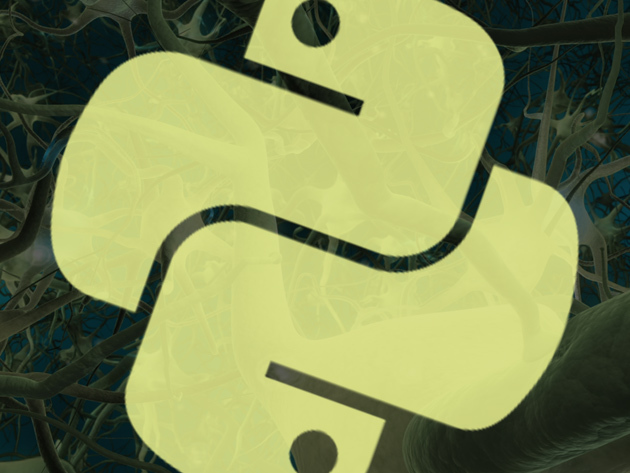
KEY FEATURES
A recurrent neural network is a class of artificial neural network where connections form a directed cycle, using their internal memory to process arbitrary sequences of inputs. This makes them capable of tasks like handwriting and speech recognition. In this course, you’ll explore this extremely expressive facet of deep learning and get up to speed on this revolutionary new advance.
- Access 32 lectures & 4 hours of content 24/7
- Get introduced to the Simple Recurrent Unit, also known as the Elman unit
- Extend the XOR problem as a parity problem
- Explore language modeling
- Learn Word2Vec to create word vectors or word embeddings
- Look at the long short-term memory unit (LSTM), & gated recurrent unit (GRU)
- Apply what you learn to practical problems like learning a language model from Wikipedia data
PRODUCT SPECS
Details & Requirements
- Length of time users can access this course: lifetime
- Access options: web streaming, mobile streaming
- Certification of completion not included
- Redemption deadline: redeem your code within 30 days of purchase
- Experience level required: all levels, but you must have some knowledge of calculus, linear algebra, probability, Python, Numpy, and be able to write a feedforward neural network in Theano and TensorFlow.
- All code for this course is available for download here, in the directory rnn_class
Compatibility
- Internet required
THE EXPERT
The Lazy Programmer is a data scientist, big data engineer, and full stack software engineer. For his master’s thesis he worked on brain-computer interfaces using machine learning. These assist non-verbal and non-mobile persons to communicate with their family and caregivers.
He has worked in online advertising and digital media as both a data scientist and big data engineer, and built various high-throughput web services around said data. He has created new big data pipelines using Hadoop/Pig/MapReduce, and created machine learning models to predict click-through rate, news feed recommender systems using linear regression, Bayesian Bandits, and collaborative filtering and validated the results using A/B testing.
He has taught undergraduate and graduate students in data science, statistics, machine learning, algorithms, calculus, computer graphics, and physics for students attending universities such as Columbia University, NYU, Humber College, and The New School.
Multiple businesses have benefitted from his web programming expertise. He does all the backend (server), frontend (HTML/JS/CSS), and operations/deployment work. Some of the technologies he has used are: Python, Ruby/Rails, PHP, Bootstrap, jQuery (Javascript), Backbone, and Angular. For storage/databases he has used MySQL, Postgres, Redis, MongoDB, and more.

KEY FEATURES
In this course you’ll explore advanced natural language processing – the field of computer science and AI that concerns interactions between computer and human languages. Over the course you’ll learn four new NLP architectures and explore classic NLP problems like parts-of-speech tagging and named entity recognition, and use recurrent neural networks to solve them. By course’s end, you’ll have a firm grasp on natural language processing and its many applications.
- Access 40 lectures & 4.5 hours of content 24/7
- Discover Word2Vec & how it maps words to a vector space
- Explore GLoVe’s use of matrix factorization & how it contributes to recommendation systems
- Learn about recursive neural networks which will help solve the problem of negation in sentiment analysis
PRODUCT SPECS
Details & Requirements
- Length of time users can access this course: lifetime
- Access options: web streaming, mobile streaming
- Certification of completion not included
- Redemption deadline: redeem your code within 30 days of purchase
- Experience level required: advanced, but you must have some knowledge of calculus, linear algebra, probability, Python, Numpy, and be able to write a feedforward neural network in Theano and TensorFlow.
- All code for this course is available for download here, in the directory nlp_class2
Compatibility
- Internet required
THE EXPERT
The Lazy Programmer is a data scientist, big data engineer, and full stack software engineer. For his master’s thesis he worked on brain-computer interfaces using machine learning. These assist non-verbal and non-mobile persons to communicate with their family and caregivers.
He has worked in online advertising and digital media as both a data scientist and big data engineer, and built various high-throughput web services around said data. He has created new big data pipelines using Hadoop/Pig/MapReduce, and created machine learning models to predict click-through rate, news feed recommender systems using linear regression, Bayesian Bandits, and collaborative filtering and validated the results using A/B testing.
He has taught undergraduate and graduate students in data science, statistics, machine learning, algorithms, calculus, computer graphics, and physics for students attending universities such as Columbia University, NYU, Humber College, and The New School.
Multiple businesses have benefitted from his web programming expertise. He does all the backend (server), frontend (HTML/JS/CSS), and operations/deployment work. Some of the technologies he has used are: Python, Ruby/Rails, PHP, Bootstrap, jQuery (Javascript), Backbone, and Angular. For storage/databases he has used MySQL, Postgres, Redis, MongoDB, and more.
February 14, 2017 / by Marco / Artificial, Bundle, Business', deals, design, entrepreneur, intelligence, Learning, machine, website
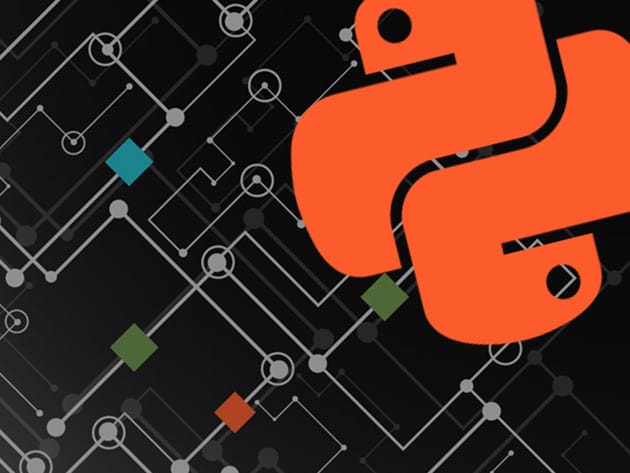
The Machine Learning and Artificial Intelligence Bundle for $39

KEY FEATURES
Over this course you will build multiple practical systems using natural language processing (NLP), the branch of machine learning and data science that deals with text and speech. You’ll start with a background on NLP before diving in, building a spam detector and a model for sentiment analysis in Python. Learning how to build these practical tools will give you an excellent window into the mechanisms that drive machine learning.
- Access 19 lectures & 2 hours of content 24/7
- Build a spam detector & sentiment analysis model that may be used to predict the stock market
- Learn practical tools & techniques like the natural language toolkit library & latent semantic analysis
- Create an article spinner from scratch that can be used as an SEO tool
Think this is cool? Check out the other bundles in this series, The Deep Learning and Artificial Intelligence Introductory Bundle, and The Advanced Guide to Deep Learning and Artificial Intelligence.
PRODUCT SPECS
Details & Requirements
- Length of time users can access this course: lifetime
- Access options: web streaming, mobile streaming
- Certification of completion not included
- Redemption deadline: redeem your code within 30 days of purchase
- Experience level required: all levels, but knowledge of Python and Numpy coding is expected
- All code for this course is available for download here, in the directory nlp_class
Compatibility
- Internet required
THE EXPERT
The Lazy Programmer is a data scientist, big data engineer, and full stack software engineer. For his master’s thesis he worked on brain-computer interfaces using machine learning. These assist non-verbal and non-mobile persons to communicate with their family and caregivers.
He has worked in online advertising and digital media as both a data scientist and big data engineer, and built various high-throughput web services around said data. He has created new big data pipelines using Hadoop/Pig/MapReduce, and created machine learning models to predict click-through rate, news feed recommender systems using linear regression, Bayesian Bandits, and collaborative filtering and validated the results using A/B testing.
He has taught undergraduate and graduate students in data science, statistics, machine learning, algorithms, calculus, computer graphics, and physics for students attending universities such as Columbia University, NYU, Humber College, and The New School.
Multiple businesses have benefitted from his web programming expertise. He does all the backend (server), frontend (HTML/JS/CSS), and operations/deployment work. Some of the technologies he has used are: Python, Ruby/Rails, PHP, Bootstrap, jQuery (Javascript), Backbone, and Angular. For storage/databases he has used MySQL, Postgres, Redis, MongoDB, and more.

KEY FEATURES
Data, in many forms, is presented in sequences: stock prices, language, credit scoring, etc. Being able to analyze them, therefore, is of invaluable importance. In this course you’ll learn a machine learning algorithm – the Hidden Markov Model – to model sequences effectively. You’ll also delve deeper into the many practical applications of Markov Models and Hidden Markov Models.
- Access 40 lectures & 4.5 hours of content 24/7
- Use gradient descent to solve for the optimal parameters of a Hidden Markov Model
- Learn how to work w/ sequences in Theano
- Calculate models of sickness & health
- Analyze how people interact w/ a website using Markov Models
- Explore Google’s PageRank algorithm
- Generate images & discuss smartphone autosuggestions using HMMs
Think this is cool? Check out the other bundles in this series, The Deep Learning and Artificial Intelligence Introductory Bundle, and The Advanced Guide to Deep Learning and Artificial Intelligence.
PRODUCT SPECS
Details & Requirements
- Length of time users can access this course: lifetime
- Access options: web streaming, mobile streaming
- Certification of completion not included
- Redemption deadline: redeem your code within 30 days of purchase
- Experience level required: all levels, but knowledge of Python and Numpy coding is expected
- All code for this course is available for download here, in the directory hmm_class
Compatibility
- Internet required
THE EXPERT
The Lazy Programmer is a data scientist, big data engineer, and full stack software engineer. For his master’s thesis he worked on brain-computer interfaces using machine learning. These assist non-verbal and non-mobile persons to communicate with their family and caregivers.
He has worked in online advertising and digital media as both a data scientist and big data engineer, and built various high-throughput web services around said data. He has created new big data pipelines using Hadoop/Pig/MapReduce, and created machine learning models to predict click-through rate, news feed recommender systems using linear regression, Bayesian Bandits, and collaborative filtering and validated the results using A/B testing.
He has taught undergraduate and graduate students in data science, statistics, machine learning, algorithms, calculus, computer graphics, and physics for students attending universities such as Columbia University, NYU, Humber College, and The New School.
Multiple businesses have benefitted from his web programming expertise. He does all the backend (server), frontend (HTML/JS/CSS), and operations/deployment work. Some of the technologies he has used are: Python, Ruby/Rails, PHP, Bootstrap, jQuery (Javascript), Backbone, and Angular. For storage/databases he has used MySQL, Postgres, Redis, MongoDB, and more.

KEY FEATURES
Cluster analysis is a staple of unsupervised machine learning and data science, used extensively for data mining and big data because it automatically finds patterns in data. The real-world applications for this process, then, are vital, making people who can implement cluster analyses a hot commodity in the business world. In this course, you’ll become a master of clustering.
- Access 22 lectures & 1.5 hours of content 24/7
- Discuss k-means clustering & hierarchical clustering
- Explore Gaussian mixture models & kernel density estimation
- Create your own labels on clusters
Think this is cool? Check out the other bundles in this series, The Deep Learning and Artificial Intelligence Introductory Bundle, and The Advanced Guide to Deep Learning and Artificial Intelligence.
PRODUCT SPECS
Details & Requirements
- Length of time users can access this course: lifetime
- Access options: web streaming, mobile streaming
- Certification of completion not included
- Redemption deadline: redeem your code within 30 days of purchase
- Experience level required: all levels, but knowledge of Python and Numpy coding is expected
- All code for this course is available for download here, in the directory unsupervised_class
Compatibility
- Internet required
THE EXPERT
The Lazy Programmer is a data scientist, big data engineer, and full stack software engineer. For his master’s thesis he worked on brain-computer interfaces using machine learning. These assist non-verbal and non-mobile persons to communicate with their family and caregivers.
He has worked in online advertising and digital media as both a data scientist and big data engineer, and built various high-throughput web services around said data. He has created new big data pipelines using Hadoop/Pig/MapReduce, and created machine learning models to predict click-through rate, news feed recommender systems using linear regression, Bayesian Bandits, and collaborative filtering and validated the results using A/B testing.
He has taught undergraduate and graduate students in data science, statistics, machine learning, algorithms, calculus, computer graphics, and physics for students attending universities such as Columbia University, NYU, Humber College, and The New School.
Multiple businesses have benefitted from his web programming expertise. He does all the backend (server), frontend (HTML/JS/CSS), and operations/deployment work. Some of the technologies he has used are: Python, Ruby/Rails, PHP, Bootstrap, jQuery (Javascript), Backbone, and Angular. For storage/databases he has used MySQL, Postgres, Redis, MongoDB, and more.

KEY FEATURES
Machine learning is entering the scientific mainstream faster than ever, being utilized to do tasks as diverse as analyzing medical images, driving cars automatically, and everything in between. Google has even announced that machine learning is one of their top focuses of innovation, making it an invaluable subject to begin studying now. In this course, you’ll dive into the basics of machine learning, the theory behind it, and its many practical applications so you can be on the forefront of a new technological wave.
- Access 33 lectures & 3 hours of content 24/7
- Discuss the K-Nearest Neighbor algorithm, its concepts, & implement it in code
- Explore the Naive Bayes Classifier & General Bayes Classifier
- Learn about Decision Trees
- Dive into the Perceptron algorithm, the ancestor of neural networks & deep learning
- Understand more practical machine learning topics like hyperparameters, cross-validation, feature extraction, feature selection, & multiclass classification
Think this is cool? Check out the other bundles in this series, The Deep Learning and Artificial Intelligence Introductory Bundle, and The Advanced Guide to Deep Learning and Artificial Intelligence.
PRODUCT SPECS
Details & Requirements
- Length of time users can access this course: lifetime
- Access options: web streaming, mobile streaming
- Certification of completion not included
- Redemption deadline: redeem your code within 30 days of purchase
- Experience level required: all levels, but knowledge of Python and Numpy coding is expected
- All code for this course is available for download here, in the directory unsupervised_class
Compatibility
- Internet required
THE EXPERT
The Lazy Programmer is a data scientist, big data engineer, and full stack software engineer. For his master’s thesis he worked on brain-computer interfaces using machine learning. These assist non-verbal and non-mobile persons to communicate with their family and caregivers.
He has worked in online advertising and digital media as both a data scientist and big data engineer, and built various high-throughput web services around said data. He has created new big data pipelines using Hadoop/Pig/MapReduce, and created machine learning models to predict click-through rate, news feed recommender systems using linear regression, Bayesian Bandits, and collaborative filtering and validated the results using A/B testing.
He has taught undergraduate and graduate students in data science, statistics, machine learning, algorithms, calculus, computer graphics, and physics for students attending universities such as Columbia University, NYU, Humber College, and The New School.
Multiple businesses have benefitted from his web programming expertise. He does all the backend (server), frontend (HTML/JS/CSS), and operations/deployment work. Some of the technologies he has used are: Python, Ruby/Rails, PHP, Bootstrap, jQuery (Javascript), Backbone, and Angular. For storage/databases he has used MySQL, Postgres, Redis, MongoDB, and more.
December 3, 2016 / by Marco / Artificial, Bundle, Business', deals, Deep, design, entrepreneur, intelligence, Introductory, Learning, website
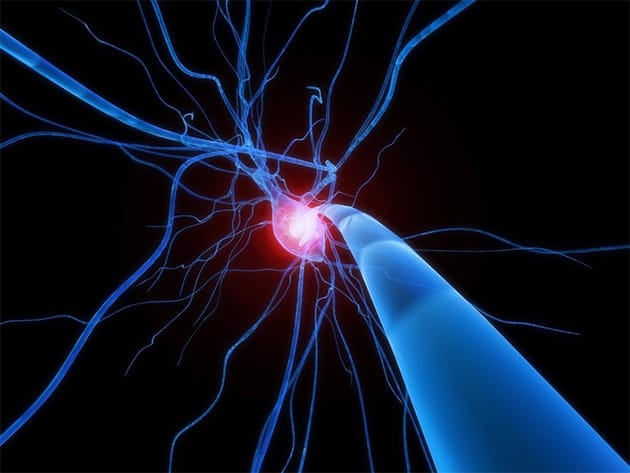
The Deep Learning and Artificial Intelligence Introductory Bundle for $39
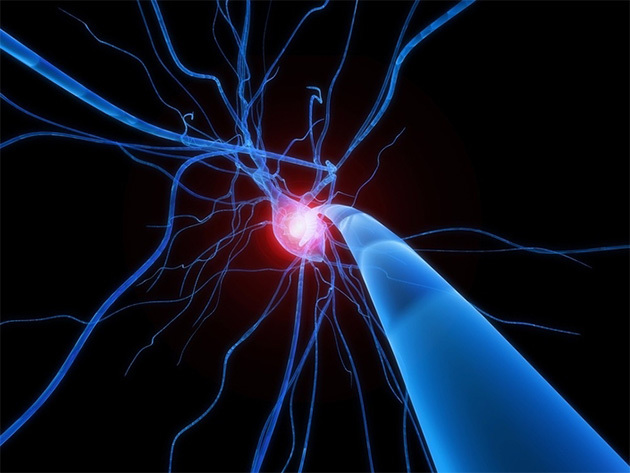
KEY FEATURES
Deep Learning is a set of powerful algorithms that are the force behind self-driving cars, image searching, voice recognition, and many, many more applications we consider decidedly “futuristic.” One of the central foundations of deep learning is linear regression; using probability theory to gain deeper insight into the “line of best fit.” This is the first step to building machines that, in effect, act like neurons in a neural network as they learn while they’re fed more information. In this course, you’ll start with the basics of building a linear regression module in Python, and progress into practical machine learning issues that will provide the foundations for an exploration of Deep Learning.
- Access 20 lectures & 2 hours of content 24/7
- Use a 1-D linear regression to prove Moore’s Law
- Learn how to create a machine learning model that can learn from multiple inputs
- Apply multi-dimensional linear regression to predict a patient’s systolic blood pressure given their age & weight
- Discuss generalization, overfitting, train-test splits, & other issues that may arise while performing data analysis
Like what you’re learning? Try out the The Advanced Guide to Deep Learning and Artificial Intelligence next.
PRODUCT SPECS
Details & Requirements
- Length of time users can access this course: lifetime
- Access options: web streaming, mobile streaming
- Certification of completion not included
- Redemption deadline: redeem your code within 30 days of purchase
- Experience level required: all levels, but you must have some knowledge of calculus, linear algebra, probability, Python, and Numpy
- All code for this course is available for download here, in the directory linear_regression_class
Compatibility
- Internet required
THE EXPERT
The Lazy Programmer is a data scientist, big data engineer, and full stack software engineer. For his master’s thesis he worked on brain-computer interfaces using machine learning. These assist non-verbal and non-mobile persons to communicate with their family and caregivers.
He has worked in online advertising and digital media as both a data scientist and big data engineer, and built various high-throughput web services around said data. He has created new big data pipelines using Hadoop/Pig/MapReduce, and created machine learning models to predict click-through rate, news feed recommender systems using linear regression, Bayesian Bandits, and collaborative filtering and validated the results using A/B testing.
He has taught undergraduate and graduate students in data science, statistics, machine learning, algorithms, calculus, computer graphics, and physics for students attending universities such as Columbia University, NYU, Humber College, and The New School.
Multiple businesses have benefitted from his web programming expertise. He does all the backend (server), frontend (HTML/JS/CSS), and operations/deployment work. Some of the technologies he has used are: Python, Ruby/Rails, PHP, Bootstrap, jQuery (Javascript), Backbone, and Angular. For storage/databases he has used MySQL, Postgres, Redis, MongoDB, and more.
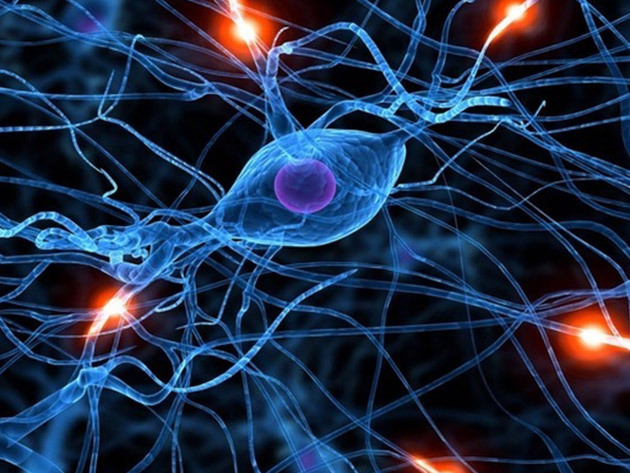
KEY FEATURES
Logistic regression is one of the most fundamental techniques used in machine learning, data science, and statistics, as it may be used to create a classification or labeling algorithm that quite resembles a biological neuron. Logistic regression units, by extension, are the basic bricks in the neural network, the central architecture in deep learning. In this course, you’ll come to terms with logistic regression using practical, real-world examples to fully appreciate the vast applications of Deep Learning.
- Access 31 lectures & 3 hours of content 24/7
- Code your own logistic regression module in Python
- Complete a course project that predicts user actions on a website given user data
- Use Deep Learning for facial expression recognition
- Understand how to make data-driven decisions
Like what you’re learning? Try out the The Advanced Guide to Deep Learning and Artificial Intelligence next.
PRODUCT SPECS
Details & Requirements
- Length of time users can access this course: lifetime
- Access options: web streaming, mobile streaming
- Certification of completion not included
- Redemption deadline: redeem your code within 30 days of purchase
- Experience level required: all levels, but you must have some knowledge of calculus, linear algebra, probability, Python, and Numpy
- All code for this course is available for download here, in the directory logistic_regression_class
Compatibility
- Internet required
THE EXPERT
The Lazy Programmer is a data scientist, big data engineer, and full stack software engineer. For his master’s thesis he worked on brain-computer interfaces using machine learning. These assist non-verbal and non-mobile persons to communicate with their family and caregivers.
He has worked in online advertising and digital media as both a data scientist and big data engineer, and built various high-throughput web services around said data. He has created new big data pipelines using Hadoop/Pig/MapReduce, and created machine learning models to predict click-through rate, news feed recommender systems using linear regression, Bayesian Bandits, and collaborative filtering and validated the results using A/B testing.
He has taught undergraduate and graduate students in data science, statistics, machine learning, algorithms, calculus, computer graphics, and physics for students attending universities such as Columbia University, NYU, Humber College, and The New School.
Multiple businesses have benefitted from his web programming expertise. He does all the backend (server), frontend (HTML/JS/CSS), and operations/deployment work. Some of the technologies he has used are: Python, Ruby/Rails, PHP, Bootstrap, jQuery (Javascript), Backbone, and Angular. For storage/databases he has used MySQL, Postgres, Redis, MongoDB, and more.
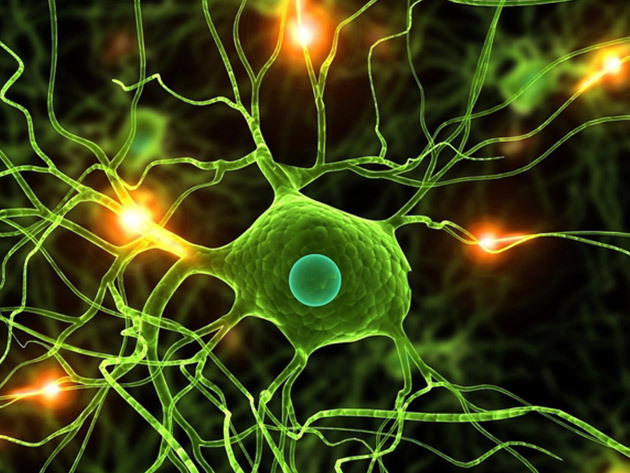
KEY FEATURES
Artificial neural networks are the architecture that make Apple’s Siri recognize your voice, Tesla’s self-driving cars know where to turn, Google Translate learn new languages, and so many more technological features you have quite possibly taken for granted. The data science that unites all of them is Deep Learning. In this course, you’ll build your very first neural network, going beyond basic models to build networks that automatically learn features.
- Access 37 lectures & 4 hours of content 24/7
- Extend the binary classification model to multiple classes uing the softmax function
- Code the important training method, backpropagation, in Numpy
- Implement a neural network using Google’s TensorFlow library
- Predict user actions on a website given user data using a neural network
- Use Deep Learning for facial expression recognition
- Learn some of the newest development in neural networks
Like what you’re learning? Try out the The Advanced Guide to Deep Learning and Artificial Intelligence next.
PRODUCT SPECS
Details & Requirements
- Length of time users can access this course: lifetime
- Access options: web streaming, mobile streaming
- Certification of completion not included
- Redemption deadline: redeem your code within 30 days of purchase
- Experience level required: intermediate, but you must have some knowledge of calculus, linear algebra, probability, Python, and Numpy
- All code for this course is available for download here, in the directory ann_class
Compatibility
- Internet required
THE EXPERT
The Lazy Programmer is a data scientist, big data engineer, and full stack software engineer. For his master’s thesis he worked on brain-computer interfaces using machine learning. These assist non-verbal and non-mobile persons to communicate with their family and caregivers.
He has worked in online advertising and digital media as both a data scientist and big data engineer, and built various high-throughput web services around said data. He has created new big data pipelines using Hadoop/Pig/MapReduce, and created machine learning models to predict click-through rate, news feed recommender systems using linear regression, Bayesian Bandits, and collaborative filtering and validated the results using A/B testing.
He has taught undergraduate and graduate students in data science, statistics, machine learning, algorithms, calculus, computer graphics, and physics for students attending universities such as Columbia University, NYU, Humber College, and The New School.
Multiple businesses have benefitted from his web programming expertise. He does all the backend (server), frontend (HTML/JS/CSS), and operations/deployment work. Some of the technologies he has used are: Python, Ruby/Rails, PHP, Bootstrap, jQuery (Javascript), Backbone, and Angular. For storage/databases he has used MySQL, Postgres, Redis, MongoDB, and more.
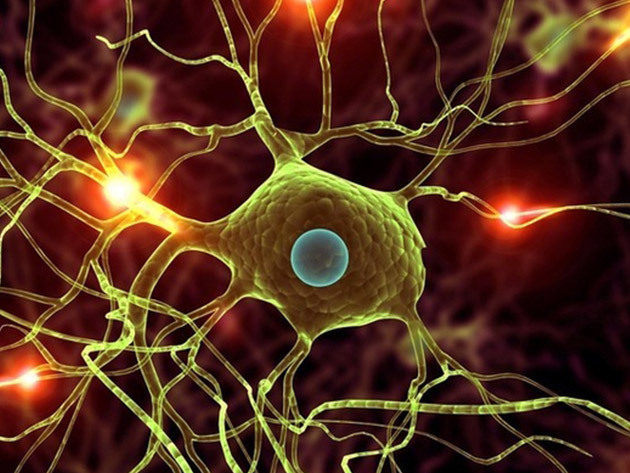
KEY FEATURES
The applications of Deep Learning are many, and constantly growing, just like the neural networks that it supports. In this course, you’ll delve into advanced concepts of Deep Learning, starting with the basics of TensorFlow and Theano, understanding how to build neural networks with these popular tools. Using these tools, you’ll learn how to build and understand a neural network, knowing exactly how to visualize what is happening within a model as it learns.
- Access 23 lectures & 3 hours of programming 24/7
- Discover batch & stochastic gradient descent, two techniques that allow you to train on a small sample of data at each iteration, greatly speeding up training time
- Discuss how momentum can carry you through local minima
- Learn adaptive learning rate techniques like AdaGrad & RMSprop
- Explore dropout regularization & other modern neural network techniques
- Understand the variables & expressions of TensorFlow & Theano
- Set up a GPU-instance on AWS & compare the speed of CPU vs GPU for training a deep neural network
- Look at the MNIST dataset & compare against known benchmarks
Like what you’re learning? Try out the The Advanced Guide to Deep Learning and Artificial Intelligence next.
PRODUCT SPECS
Details & Requirements
- Length of time users can access this course: lifetime
- Access options: web streaming, mobile streaming
- Certification of completion not included
- Redemption deadline: redeem your code within 30 days of purchase
- Experience level required: all levels, but you must have some knowledge of calculus, linear algebra, probability, Python, and Numpy
- All code for this course is available for download here, in the directory ann_class2
Compatibility
- Internet required
THE EXPERT
The Lazy Programmer is a data scientist, big data engineer, and full stack software engineer. For his master’s thesis he worked on brain-computer interfaces using machine learning. These assist non-verbal and non-mobile persons to communicate with their family and caregivers.
He has worked in online advertising and digital media as both a data scientist and big data engineer, and built various high-throughput web services around said data. He has created new big data pipelines using Hadoop/Pig/MapReduce, and created machine learning models to predict click-through rate, news feed recommender systems using linear regression, Bayesian Bandits, and collaborative filtering and validated the results using A/B testing.
He has taught undergraduate and graduate students in data science, statistics, machine learning, algorithms, calculus, computer graphics, and physics for students attending universities such as Columbia University, NYU, Humber College, and The New School.
Multiple businesses have benefitted from his web programming expertise. He does all the backend (server), frontend (HTML/JS/CSS), and operations/deployment work. Some of the technologies he has used are: Python, Ruby/Rails, PHP, Bootstrap, jQuery (Javascript), Backbone, and Angular. For storage/databases he has used MySQL, Postgres, Redis, MongoDB, and more.
November 29, 2016 / by Marco / Advanced, Artificial, Business', deals, Deep, design, entrepreneur, guide, intelligence, Learning, website
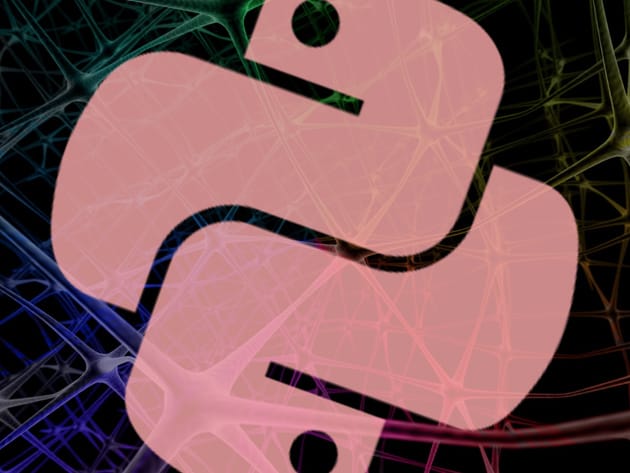
The Advanced Guide to Deep Learning and Artificial Intelligence for $42

KEY FEATURES
In this course, intended to expand upon your knowledge of neural networks and deep learning, you’ll harness these concepts for computer vision using convolutional neural networks. Going in-depth on the concept of convolution, you’ll discover its wide range of applications, from generating image effects to modeling artificial organs.
- Access 25 lectures & 3 hours of content 24/7
- Explore the StreetView House Number (SVHN) dataset using convolutional neural networks (CNNs)
- Build convolutional filters that can be applied to audio or imaging
- Extend deep neural networks w/ just a few functions
- Test CNNs written in both Theano & TensorFlow
Note: we strongly recommend taking The Deep Learning & Artificial Intelligence Introductory Bundle before this course.
PRODUCT SPECS
Details & Requirements
- Length of time users can access this course: lifetime
- Access options: web streaming, mobile streaming
- Certification of completion not included
- Redemption deadline: redeem your code within 30 days of purchase
- Experience level required: all levels, but you must have some knowledge of calculus, linear algebra, probability, Python, Numpy, and be able to write a feedforward neural network in Theano and TensorFlow.
- All code for this course is available for download here, in the directory cnn_class
Compatibility
- Internet required
THE EXPERT
The Lazy Programmer is a data scientist, big data engineer, and full stack software engineer. For his master’s thesis he worked on brain-computer interfaces using machine learning. These assist non-verbal and non-mobile persons to communicate with their family and caregivers.
He has worked in online advertising and digital media as both a data scientist and big data engineer, and built various high-throughput web services around said data. He has created new big data pipelines using Hadoop/Pig/MapReduce, and created machine learning models to predict click-through rate, news feed recommender systems using linear regression, Bayesian Bandits, and collaborative filtering and validated the results using A/B testing.
He has taught undergraduate and graduate students in data science, statistics, machine learning, algorithms, calculus, computer graphics, and physics for students attending universities such as Columbia University, NYU, Humber College, and The New School.
Multiple businesses have benefitted from his web programming expertise. He does all the backend (server), frontend (HTML/JS/CSS), and operations/deployment work. Some of the technologies he has used are: Python, Ruby/Rails, PHP, Bootstrap, jQuery (Javascript), Backbone, and Angular. For storage/databases he has used MySQL, Postgres, Redis, MongoDB, and more.

KEY FEATURES
In this course, you’ll dig deep into deep learning, discussing principal components analysis and a popular nonlinear dimensionality reduction technique known as t-distributed stochastic neighbor embedding (t-SNE). From there you’ll learn about a special type of unsupervised neural network called the autoencoder, understanding how to link many together to get a better performance out of deep neural networks.
- Access 30 lectures & 3 hours of content 24/7
- Discuss restricted Boltzmann machines (RBMs) & how to pretrain supervised deep neural networks
- Learn about Gibbs sampling
- Use PCA & t-SNE on features learned by autoencoders & RBMs
- Understand the most modern deep learning developments
PRODUCT SPECS
Details & Requirements
- Length of time users can access this course: lifetime
- Access options: web streaming, mobile streaming
- Certification of completion not included
- Redemption deadline: redeem your code within 30 days of purchase
- Experience level required: intermediate, but you must have some knowledge of calculus, linear algebra, probability, Python, Numpy, and be able to write a feedforward neural network in Theano and TensorFlow.
- All code for this course is available for download here, in the directory unsupervised_class2
Compatibility
- Internet required
THE EXPERT
The Lazy Programmer is a data scientist, big data engineer, and full stack software engineer. For his master’s thesis he worked on brain-computer interfaces using machine learning. These assist non-verbal and non-mobile persons to communicate with their family and caregivers.
He has worked in online advertising and digital media as both a data scientist and big data engineer, and built various high-throughput web services around said data. He has created new big data pipelines using Hadoop/Pig/MapReduce, and created machine learning models to predict click-through rate, news feed recommender systems using linear regression, Bayesian Bandits, and collaborative filtering and validated the results using A/B testing.
He has taught undergraduate and graduate students in data science, statistics, machine learning, algorithms, calculus, computer graphics, and physics for students attending universities such as Columbia University, NYU, Humber College, and The New School.
Multiple businesses have benefitted from his web programming expertise. He does all the backend (server), frontend (HTML/JS/CSS), and operations/deployment work. Some of the technologies he has used are: Python, Ruby/Rails, PHP, Bootstrap, jQuery (Javascript), Backbone, and Angular. For storage/databases he has used MySQL, Postgres, Redis, MongoDB, and more.

KEY FEATURES
A recurrent neural network is a class of artificial neural network where connections form a directed cycle, using their internal memory to process arbitrary sequences of inputs. This makes them capable of tasks like handwriting and speech recognition. In this course, you’ll explore this extremely expressive facet of deep learning and get up to speed on this revolutionary new advance.
- Access 32 lectures & 4 hours of content 24/7
- Get introduced to the Simple Recurrent Unit, also known as the Elman unit
- Extend the XOR problem as a parity problem
- Explore language modeling
- Learn Word2Vec to create word vectors or word embeddings
- Look at the long short-term memory unit (LSTM), & gated recurrent unit (GRU)
- Apply what you learn to practical problems like learning a language model from Wikipedia data
PRODUCT SPECS
Details & Requirements
- Length of time users can access this course: lifetime
- Access options: web streaming, mobile streaming
- Certification of completion not included
- Redemption deadline: redeem your code within 30 days of purchase
- Experience level required: all levels, but you must have some knowledge of calculus, linear algebra, probability, Python, Numpy, and be able to write a feedforward neural network in Theano and TensorFlow.
- All code for this course is available for download here, in the directory rnn_class
Compatibility
- Internet required
THE EXPERT
The Lazy Programmer is a data scientist, big data engineer, and full stack software engineer. For his master’s thesis he worked on brain-computer interfaces using machine learning. These assist non-verbal and non-mobile persons to communicate with their family and caregivers.
He has worked in online advertising and digital media as both a data scientist and big data engineer, and built various high-throughput web services around said data. He has created new big data pipelines using Hadoop/Pig/MapReduce, and created machine learning models to predict click-through rate, news feed recommender systems using linear regression, Bayesian Bandits, and collaborative filtering and validated the results using A/B testing.
He has taught undergraduate and graduate students in data science, statistics, machine learning, algorithms, calculus, computer graphics, and physics for students attending universities such as Columbia University, NYU, Humber College, and The New School.
Multiple businesses have benefitted from his web programming expertise. He does all the backend (server), frontend (HTML/JS/CSS), and operations/deployment work. Some of the technologies he has used are: Python, Ruby/Rails, PHP, Bootstrap, jQuery (Javascript), Backbone, and Angular. For storage/databases he has used MySQL, Postgres, Redis, MongoDB, and more.
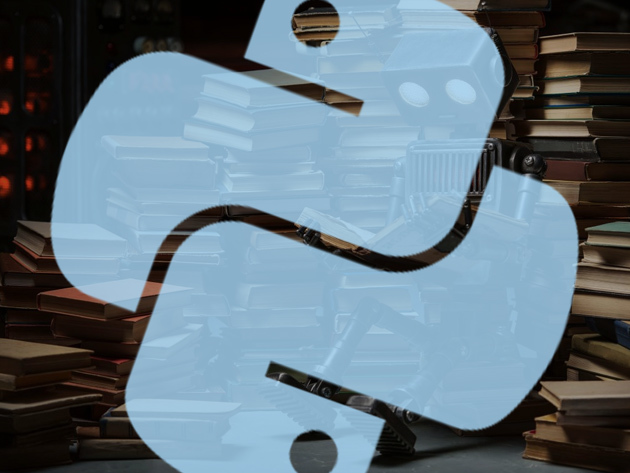
KEY FEATURES
In this course you’ll explore advanced natural language processing – the field of computer science and AI that concerns interactions between computer and human languages. Over the course you’ll learn four new NLP architectures and explore classic NLP problems like parts-of-speech tagging and named entity recognition, and use recurrent neural networks to solve them. By course’s end, you’ll have a firm grasp on natural language processing and its many applications.
- Access 40 lectures & 4.5 hours of content 24/7
- Discover Word2Vec & how it maps words to a vector space
- Explore GLoVe’s use of matrix factorization & how it contributes to recommendation systems
- Learn about recursive neural networks which will help solve the problem of negation in sentiment analysis
PRODUCT SPECS
Details & Requirements
- Length of time users can access this course: lifetime
- Access options: web streaming, mobile streaming
- Certification of completion not included
- Redemption deadline: redeem your code within 30 days of purchase
- Experience level required: advanced, but you must have some knowledge of calculus, linear algebra, probability, Python, Numpy, and be able to write a feedforward neural network in Theano and TensorFlow.
- All code for this course is available for download here, in the directory nlp_class2
Compatibility
- Internet required
THE EXPERT
The Lazy Programmer is a data scientist, big data engineer, and full stack software engineer. For his master’s thesis he worked on brain-computer interfaces using machine learning. These assist non-verbal and non-mobile persons to communicate with their family and caregivers.
He has worked in online advertising and digital media as both a data scientist and big data engineer, and built various high-throughput web services around said data. He has created new big data pipelines using Hadoop/Pig/MapReduce, and created machine learning models to predict click-through rate, news feed recommender systems using linear regression, Bayesian Bandits, and collaborative filtering and validated the results using A/B testing.
He has taught undergraduate and graduate students in data science, statistics, machine learning, algorithms, calculus, computer graphics, and physics for students attending universities such as Columbia University, NYU, Humber College, and The New School.
Multiple businesses have benefitted from his web programming expertise. He does all the backend (server), frontend (HTML/JS/CSS), and operations/deployment work. Some of the technologies he has used are: Python, Ruby/Rails, PHP, Bootstrap, jQuery (Javascript), Backbone, and Angular. For storage/databases he has used MySQL, Postgres, Redis, MongoDB, and more.
The Deep Learning & Artificial Intelligence Introductory Bundle for $39

KEY FEATURES
Deep Learning is a set of powerful algorithms that are the force behind self-driving cars, image searching, voice recognition, and many, many more applications we consider decidedly “futuristic.” One of the central foundations of deep learning is linear regression; using probability theory to gain deeper insight into the “line of best fit.” This is the first step to building machines that, in effect, act like neurons in a neural network as they learn while they’re fed more information. In this course, you’ll start with the basics of building a linear regression module in Python, and progress into practical machine learning issues that will provide the foundations for an exploration of Deep Learning.
- Access 20 lectures & 2 hours of content 24/7
- Use a 1-D linear regression to prove Moore’s Law
- Learn how to create a machine learning model that can learn from multiple inputs
- Apply multi-dimensional linear regression to predict a patient’s systolic blood pressure given their age & weight
- Discuss generalization, overfitting, train-test splits, & other issues that may arise while performing data analysis
PRODUCT SPECS
Details & Requirements
- Length of time users can access this course: lifetime
- Access options: web streaming, mobile streaming
- Certification of completion not included
- Redemption deadline: redeem your code within 30 days of purchase
- Experience level required: all levels, but you must have some knowledge of calculus, linear algebra, probability, Python, and Numpy
- All code for this course is available for download here, in the directory linear_regression_class
Compatibility
- Internet required
THE EXPERT
The Lazy Programmer is a data scientist, big data engineer, and full stack software engineer. For his master’s thesis he worked on brain-computer interfaces using machine learning. These assist non-verbal and non-mobile persons to communicate with their family and caregivers.
He has worked in online advertising and digital media as both a data scientist and big data engineer, and built various high-throughput web services around said data. He has created new big data pipelines using Hadoop/Pig/MapReduce, and created machine learning models to predict click-through rate, news feed recommender systems using linear regression, Bayesian Bandits, and collaborative filtering and validated the results using A/B testing.
He has taught undergraduate and graduate students in data science, statistics, machine learning, algorithms, calculus, computer graphics, and physics for students attending universities such as Columbia University, NYU, Humber College, and The New School.
Multiple businesses have benefitted from his web programming expertise. He does all the backend (server), frontend (HTML/JS/CSS), and operations/deployment work. Some of the technologies he has used are: Python, Ruby/Rails, PHP, Bootstrap, jQuery (Javascript), Backbone, and Angular. For storage/databases he has used MySQL, Postgres, Redis, MongoDB, and more.

KEY FEATURES
Logistic regression is one of the most fundamental techniques used in machine learning, data science, and statistics, as it may be used to create a classification or labeling algorithm that quite resembles a biological neuron. Logistic regression units, by extension, are the basic bricks in the neural network, the central architecture in deep learning. In this course, you’ll come to terms with logistic regression using practical, real-world examples to fully appreciate the vast applications of Deep Learning.
- Access 31 lectures & 3 hours of content 24/7
- Code your own logistic regression module in Python
- Complete a course project that predicts user actions on a website given user data
- Use Deep Learning for facial expression recognition
- Understand how to make data-driven decisions
PRODUCT SPECS
Details & Requirements
- Length of time users can access this course: lifetime
- Access options: web streaming, mobile streaming
- Certification of completion not included
- Redemption deadline: redeem your code within 30 days of purchase
- Experience level required: all levels, but you must have some knowledge of calculus, linear algebra, probability, Python, and Numpy
- All code for this course is available for download here, in the directory logistic_regression_class
Compatibility
- Internet required
THE EXPERT
The Lazy Programmer is a data scientist, big data engineer, and full stack software engineer. For his master’s thesis he worked on brain-computer interfaces using machine learning. These assist non-verbal and non-mobile persons to communicate with their family and caregivers.
He has worked in online advertising and digital media as both a data scientist and big data engineer, and built various high-throughput web services around said data. He has created new big data pipelines using Hadoop/Pig/MapReduce, and created machine learning models to predict click-through rate, news feed recommender systems using linear regression, Bayesian Bandits, and collaborative filtering and validated the results using A/B testing.
He has taught undergraduate and graduate students in data science, statistics, machine learning, algorithms, calculus, computer graphics, and physics for students attending universities such as Columbia University, NYU, Humber College, and The New School.
Multiple businesses have benefitted from his web programming expertise. He does all the backend (server), frontend (HTML/JS/CSS), and operations/deployment work. Some of the technologies he has used are: Python, Ruby/Rails, PHP, Bootstrap, jQuery (Javascript), Backbone, and Angular. For storage/databases he has used MySQL, Postgres, Redis, MongoDB, and more.

KEY FEATURES
Artificial neural networks are the architecture that make Apple’s Siri recognize your voice, Tesla’s self-driving cars know where to turn, Google Translate learn new languages, and so many more technological features you have quite possibly taken for granted. The data science that unites all of them is Deep Learning. In this course, you’ll build your very first neural network, going beyond basic models to build networks that automatically learn features.
- Access 37 lectures & 4 hours of content 24/7
- Extend the binary classification model to multiple classes uing the softmax function
- Code the important training method, backpropagation, in Numpy
- Implement a neural network using Google’s TensorFlow library
- Predict user actions on a website given user data using a neural network
- Use Deep Learning for facial expression recognition
- Learn some of the newest development in neural networks
PRODUCT SPECS
Details & Requirements
- Length of time users can access this course: lifetime
- Access options: web streaming, mobile streaming
- Certification of completion not included
- Redemption deadline: redeem your code within 30 days of purchase
- Experience level required: intermediate, but you must have some knowledge of calculus, linear algebra, probability, Python, and Numpy
- All code for this course is available for download here, in the directory ann_class
Compatibility
- Internet required
THE EXPERT
The Lazy Programmer is a data scientist, big data engineer, and full stack software engineer. For his master’s thesis he worked on brain-computer interfaces using machine learning. These assist non-verbal and non-mobile persons to communicate with their family and caregivers.
He has worked in online advertising and digital media as both a data scientist and big data engineer, and built various high-throughput web services around said data. He has created new big data pipelines using Hadoop/Pig/MapReduce, and created machine learning models to predict click-through rate, news feed recommender systems using linear regression, Bayesian Bandits, and collaborative filtering and validated the results using A/B testing.
He has taught undergraduate and graduate students in data science, statistics, machine learning, algorithms, calculus, computer graphics, and physics for students attending universities such as Columbia University, NYU, Humber College, and The New School.
Multiple businesses have benefitted from his web programming expertise. He does all the backend (server), frontend (HTML/JS/CSS), and operations/deployment work. Some of the technologies he has used are: Python, Ruby/Rails, PHP, Bootstrap, jQuery (Javascript), Backbone, and Angular. For storage/databases he has used MySQL, Postgres, Redis, MongoDB, and more.

KEY FEATURES
The applications of Deep Learning are many, and constantly growing, just like the neural networks that it supports. In this course, you’ll delve into advanced concepts of Deep Learning, starting with the basics of TensorFlow and Theano, understanding how to build neural networks with these popular tools. Using these tools, you’ll learn how to build and understand a neural network, knowing exactly how to visualize what is happening within a model as it learns.
- Access 23 lectures & 3 hours of programming 24/7
- Discover batch & stochastic gradient descent, two techniques that allow you to train on a small sample of data at each iteration, greatly speeding up training time
- Discuss how momentum can carry you through local minima
- Learn adaptive learning rate techniques like AdaGrad & RMSprop
- Explore dropout regularization & other modern neural network techniques
- Understand the variables & expressions of TensorFlow & Theano
- Set up a GPU-instance on AWS & compare the speed of CPU vs GPU for training a deep neural network
- Look at the MNIST dataset & compare against known benchmarks
PRODUCT SPECS
Details & Requirements
- Length of time users can access this course: lifetime
- Access options: web streaming, mobile streaming
- Certification of completion not included
- Redemption deadline: redeem your code within 30 days of purchase
- Experience level required: all levels, but you must have some knowledge of calculus, linear algebra, probability, Python, and Numpy
- All code for this course is available for download here, in the directory ann_class2
Compatibility
- Internet required
THE EXPERT
The Lazy Programmer is a data scientist, big data engineer, and full stack software engineer. For his master’s thesis he worked on brain-computer interfaces using machine learning. These assist non-verbal and non-mobile persons to communicate with their family and caregivers.
He has worked in online advertising and digital media as both a data scientist and big data engineer, and built various high-throughput web services around said data. He has created new big data pipelines using Hadoop/Pig/MapReduce, and created machine learning models to predict click-through rate, news feed recommender systems using linear regression, Bayesian Bandits, and collaborative filtering and validated the results using A/B testing.
He has taught undergraduate and graduate students in data science, statistics, machine learning, algorithms, calculus, computer graphics, and physics for students attending universities such as Columbia University, NYU, Humber College, and The New School.
Multiple businesses have benefitted from his web programming expertise. He does all the backend (server), frontend (HTML/JS/CSS), and operations/deployment work. Some of the technologies he has used are: Python, Ruby/Rails, PHP, Bootstrap, jQuery (Javascript), Backbone, and Angular. For storage/databases he has used MySQL, Postgres, Redis, MongoDB, and more.
